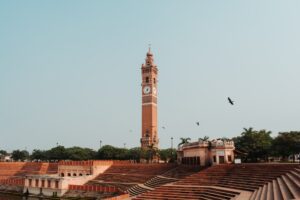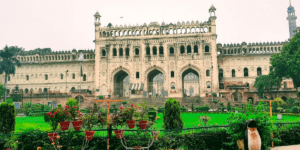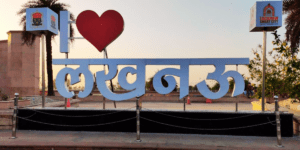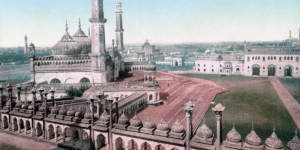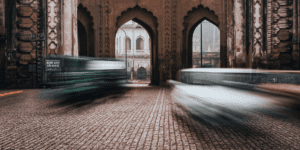The Art of Chikankari: Delving into Lucknow’s Exquisite Embroidery
Chikankari is a form of traditional embroidery that originates from the city of Lucknow in northern India. It is believed to have been introduced to India during the Mughal era when it was favored by royalty and nobility for its delicacy and intricate detailing.
Today, Chikankari continues to be a celebrated form of embroidery, adorning garments, home decor, and even accessories.
The art of Chikankari involves a skilled process of needlework, where the fabric is decorated with fine, delicate patterns using a needle and white cotton thread. The patterns typically feature floral designs, paisley motifs, and intricate geometric shapes.
Read More: The Fascinating History of Lucknow: From Nawabs to British Raj
The fabric used for Chikankari embroidery is often light and airy, such as cotton, muslin, or silk, making it perfect for the warm climate of Lucknow.

Source: Wikimedia
One of the most striking features of Chikankari embroidery is the intricate detailing and skillful craftsmanship that goes into each piece.
Each stitch is carefully placed, and the patterns are often made up of multiple layers of embroidery, creating a 3D effect that adds depth and texture to the design.
Chikankari embroidery is not limited to just one type of garment or fabric. It can be found in a variety of clothing such as sarees, salwar kameez, and kurtas.
It is also popular in home decor items such as bedspreads, cushion covers, and tablecloths. Chikankari embroidery is also a popular choice for bridal wear, with many brides opting for intricately embroidered lehengas and sarees for their special day.
The process of creating Chikankari embroidery is a time-consuming one, with some pieces taking months to complete. The embroidery is done entirely by hand, with skilled artisans carefully stitching each piece using a small needle and thread.
The patterns are often drawn onto the fabric beforehand, but many artisans also work from memory, using their experience and expertise to create intricate designs that are unique and beautiful.
One of the reasons why Chikankari embroidery has become so popular is its versatility. The embroidery can be done on a variety of fabrics, making it suitable for both casual and formal wear. It is also a great way to add a touch of traditional elegance to any outfit or home decor item.
Despite its popularity, the art of Chikankari embroidery is facing challenges in the modern era. The rise of machine embroidery has led to a decline in the number of skilled artisans who practice this art form.
Many younger generations are opting for more modern forms of embroidery, and the demand for hand-embroidered Chikankari is decreasing.
Efforts are being made to preserve the art of Chikankari embroidery, with organizations and government initiatives working to train and support young artisans.
There has also been a growing interest in sustainable and handmade products, which has led to an increase in demand for Chikankari embroidery.
In conclusion, Chikankari embroidery is a beautiful and intricate form of needlework that is deeply ingrained in the cultural heritage of Lucknow.
Its exquisite detailing and intricate designs have made it popular not just in India but around the world. It is an art form that requires immense skill and patience, and its unique charm and beauty make it truly one of a kind.


